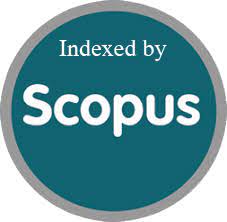The Role of Selective Exposure in Shaping Public Perception of Political Information: An Empirical Study
DOI:
https://doi.org/10.52783/jns.v14.2121Keywords:
Selective exposure, post-truth, cognitive dissonance, confirmation bias, media polarizationAbstract
In the post-truth era, selective exposure to political information significantly influences public perception, reinforcing ideological polarization. This study examines the extent to which individuals engage with diverse political perspectives and the psychological and algorithmic mechanisms that shape selective exposure. Using a quantitative cross-sectional survey conducted in Jammu and Kashmir, the study analyzes the relationship between media consumption patterns, political discussions, and resistance to contradictory viewpoints. The findings confirm that frequent exposure to political information correlates with higher rejection of opposing views, reinforcing cognitive dissonance and confirmation bias. Moreover, self-reported efforts to diversify media consumption did not align with actual exposure, indicating performative rather than substantive diversification. These results underscore the role of social and digital media in deepening ideological divides, highlighting the need for interventions that promote genuine exposure to diverse perspectives.
Downloads
Metrics
References
Bakshy, E., Messing, S., & Adamic, L. A. (2015). Exposure to ideologically diverse news and opinion on Facebook. Science, 348(6239), 1130–1132. https://doi.org/10.1126/science.aaa1160
Barberá, P., Jost, J. T., Nagler, J., Tucker, J. A., & Bonneau, R. (2015). Tweeting From Left to Right: Is Online Political Communication More Than an Echo Chamber? Psychological Science, 26(10), 1531-1542. https://doi.org/10.1177/0956797615594620
Festinger, L. (1957). A theory of cognitive dissonance. Stanford University Press.
Field, A.P. (2018) Discovering Statistics Using IBM SPSS Statistics. 5th Edition, Sage, Newbury Park.
Fernbach, P. M., Rogers, T., Fox, C. R., & Sloman, S. A. (2013). Political extremism is supported by an illusion of understanding. Psychological science, 24(6), 939–946. https://doi.org/10.1177/0956797612464058
Helberger, N., Pierson, J., & Poell, T. (2017). Governing online platforms: From contested to cooperative responsibility. The Information Society, 34(9), 1–14. https://doi.org/10.1080/01972243.2017.1391913
Knobloch-Westerwick, S. (2014). Choice and Preference in Media Use: Advances in Selective Exposure Theory and Research (1st ed.). Routledge. https://doi.org/10.4324/9781315771359
Ledwich, M., & Zaitsev, A. (2020). Algorithmic extremism: Examining YouTube's rabbit hole of radicalization. First Monday, 25(3). https://doi.org/10.5210/fm.v25i3.10419
McHugh, M. L. (2013). The Chi-square test of independence. Biochemia Medica, 23(2), 143–149. https://doi.org/10.11613/BM.2013.018
McIntyre, L. (2018). Post-truth. MIT Press.
Nyhan, B., & Reifler, J. (2010). When corrections fail: The persistence of political misperceptions. Political Behavior, 32(2), 303–330. https://doi.org/10.1007/s11109-010-9112-2
Pariser, E. (2012). The filter bubble: How the new personalized web is changing what we read and how we think. Penguin Books.
Prior, M. (2013). Media and political polarization. Annual Review of Political Science, 16(1), 101-127. https://doi.org/10.1146/annurev-polisci-100711-135242
Sunstein, C. R. (2017). #Republic: Divided democracy in the age of social media. Princeton University Press.
Van Bavel, J. J., Harris, E. A., Pärnamets, P., Rathje, S., Doell, K. C., & Tucker, J. A. (2021). Political psychology in the digital (mis)information age: A model of news belief and sharing. Social Issues and Policy Review, 15(1), 84–113. https://doi.org/10.1111/sipr.12077
Vosoughi, S., Roy, D., & Aral, S. (2018). The spread of true and false news online. Science (New York, N.Y.), 359(6380), 1146–1151. https://doi.org/10.1126/science.aap9559
Lewandowsky, S., Ecker, U. K. H., & Cook, J. (2017). Beyond misinformation: Understanding and coping with the “post-truth” era. Journal of Applied Research in Memory and Cognition, 6(4), 353–369. https://doi.org/10.1016/j.jarmac.2017.07.008
Downloads
Published
How to Cite
Issue
Section
License

This work is licensed under a Creative Commons Attribution 4.0 International License.
You are free to:
- Share — copy and redistribute the material in any medium or format
- Adapt — remix, transform, and build upon the material for any purpose, even commercially.
Terms:
- Attribution — You must give appropriate credit, provide a link to the license, and indicate if changes were made. You may do so in any reasonable manner, but not in any way that suggests the licensor endorses you or your use.
- No additional restrictions — You may not apply legal terms or technological measures that legally restrict others from doing anything the license permits.










